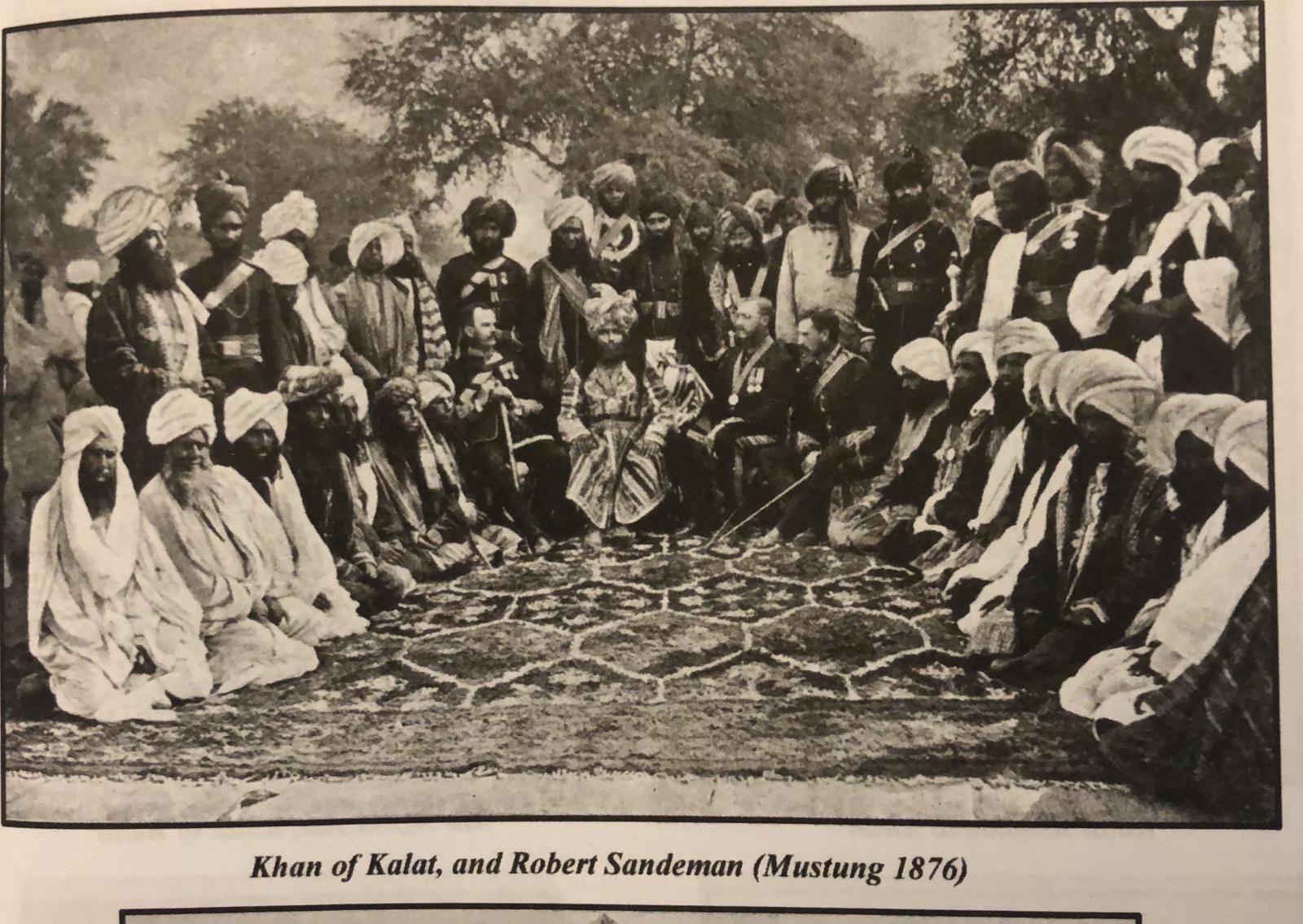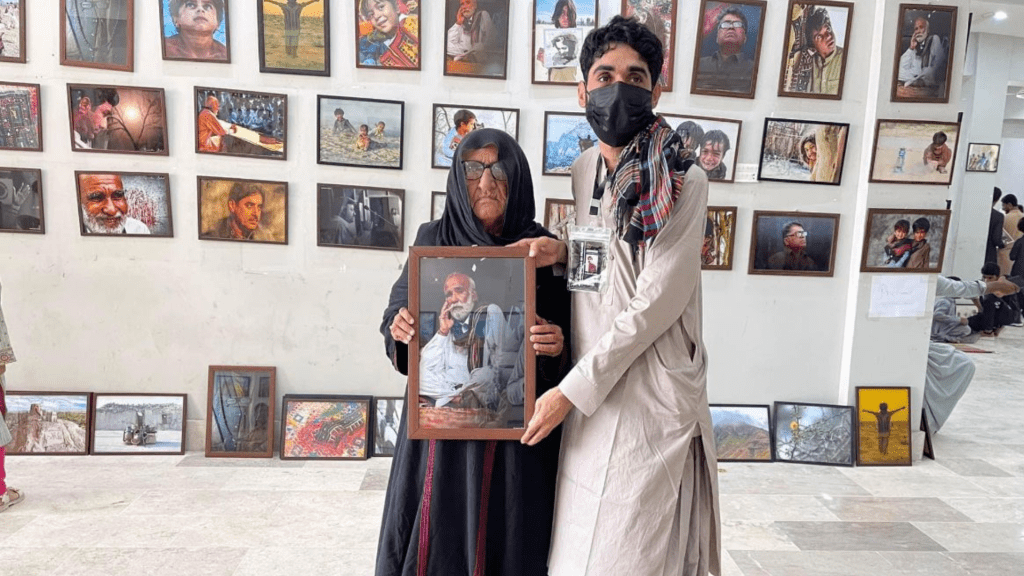Once pepper was one of the most expensive products in the world. The East India Company arrived in India around 400 years ago for spice trading. At that time, no one knew that one day a company set up by British pirates would rule more than half of Asia. A quest for a monopoly of European trade led it to conquer the whole of the Mughal empire. To maintain its empire and protect its borders, the private traders raised the largest standing army of the time, consisting of a few thousand British officers who were commanding hundreds of thousands of Indian sepoys. To protect its borders, it also raided Afghanistan and Balochistan and merged Sindh and Punjab within the empire.
By 1850, the Company empire had adopted a two-pronged strategy towards Indian states and its immediate neighbors. First, defeat a state and merge. Second, defeat a state in battle, bring regime change, and enter into a dictated & one-sided treaty with the subjugated to establish British hegemony over its foreign policy, defence and in most cases also take control of its political administration through political officers.
Kalat State, now Balochistan, fell in the second category. Britain recognised Khan of Kalat’s nominal sovereignty over the land, but controlled its foreign policy and defence, and established residencies through political officers.
In 1857, it seemed for a brief time that the British empire of the East India Company was collapsing. But some adventurous British officers with their numerous Indian sepoys succeeded in crushing a mutiny of millions of Indians. One of the soldiers of the regiment that happened to conquer Delhi during the mutiny was Robert Sandeman, who was serving as a soldier in his father’s battalion of the Bengal Regiment.
He was thought killed in an ambush by the mutineers near Delhi, and within a day, he was replaced with another British soldier. When he turned up, he found himself jobless. Thanks to his father, he was admitted to the Punjab civil administration. After a few years, he became the District Officer of Dera Ghazi Khan, a district bordering “the hill tribes”.
His job description also included the responsibility to safeguard the borders of Punjab from the “marauding freebooters” of “the hill tribes” that often crossed the border to attack and loot the neighboring fertile lands. But the task was as complicated as the nature of the very borders he was to protect. The borders had divided tribes as the same tribe shared multiple political territories. In the case of Baloch tribes, one brother was a subject of the British Raj but another was a subject of the Khan of Kalat.
Long before Sandeman’s arrival, the previous big bosses in India had decided that the safety of the British forces depended on staying within its Indian borders. Any pacifying campaign across the borders could not be taken without the approval of the top hierarchy. This was called the Lawrence Policy or Closed Border Policy that was partly shaped by bad experiences of the First Afghan war and the wars with the semi-independent Baloch and Pathan tribes dwelling in the nearby hills with proximity to Punjab and Sindh.
Both Punjab and Sindh shared borders with the Kalat State. The Company army had defeated the Kalat forces in a single battle and killed their ruler, Mehrab Khan, in 1839. In 1841, a treaty was signed between Kalat and the British by which they became allies. The treaty was replaced with another in 1854. The symbiosis was the only way of survival for the Khanate.
In 1857, while Sandeman was busy fighting against Indian mutineers, Mir Khodadad Khan inherited Kalat’s throne from his half-brother. There were many contenders, and treachery, conspiracy and open rebellion ravaged the state. Five years later, like Sandeman, the new Khan was ambushed and badly injured. When he gained consciousness, he found himself a jobless guy and a fugitive in hiding. After two years, he regained the throne of Kalat and was determined to hunt down those who had conspired against him. This resulted in a civil war and anarchy.
Meanwhile, Sandeman was busy dealing with Baloch tribes living within the Punjab borders. The British had inherited these borders from the Sikh empire which had conquered Baloch and Pathan lands around the Suleiman hill. Sandeman had noticed that the Sardari system was vanishing among the Baloch tribes in Punjab. He had learnt from his experiences in dealing with the Pathan tribes that the Jirga system was a useful political tool and it was far better to deal with a few Chiefs than thousands of tribesmen. Sandeman was busy empowering the Chiefs by backing them with state power. The new Chiefs became staunchly loyal to the British Raj while the tribesmen lost their roles in the decision-making. It was a huge change: a new elite class powered by the state emerged.
The civil war had created a state of anarchy. The Khanate was no longer in a position to maintain peace within its borders. The Maris, Bugtis and Khetrans had long been in a semi-independent state: recognizing Khan as their sovereign only when their interests required them to. Often the Khan’s forces collaborated with British forces to crush and repel their advances.
Meanwhile, the Lasbela state, allied with the Mengal tribe, planned to overthrow Khodadad Khan. In doing so, they attacked trade caravans to show the British forces that the new Khan was not competent enough to protect the trade routes in lieu of its treaty obligation. This was also aimed at forcing the British Raj to stop its annual payment of fifty thousand rupees as financial aid to Kalat.
Khodadad Khan also lost the support of the Gichkis and Nosherwanis of Makkoran. He sent a large force to restore order but could not fully succeed. The Sardars of Jhalavan and Sarawan were also in rebellion.
All this made the British worried about the situation in Kalat. Its trade to Kabul was vital, so was its military communication and free flow of supply and despatch. It is often thought that the British resident agent, Johan Malcom, was instigating the Sardars to revolt against the Khan. It might have been a useful policy for the British to a certain extent, but complete anarchy in a friendly and already subservient state was not in favor of the Raj. So the internal conflict of interest inside Kalat was mainly responsible for this anarchy: loyalty in the Khanate was to the person of the Khan and not to its political institutions. It was still being run on the verbal constitution of Naseer Khan Nuri in which he had recognised ancient rights of its Sardars to rule independently within their states while remaining loyal to the Khan, paying shares in revenue and providing men to fight in wars.
Khodadad Khan lacked political shrewdness. To him, the only way to solve a problem was the use of force. In other words, the Khan was going in an opposite direction to what Sandeman was doing in Punjab. The Englishman was creating a new class of Chiefs ruling over thousands of people by propping them up with state power.
In such a situation, Sandeman constantly pressurised the Indian government to change the border policy to allow them to take pacifying action against the tribes in the Kalat territory. Since 1839, the Kalat affairs were being managed by the Government of Bombay via its commissioner in Sindh. The commissioner emphasised to lead an armed campaign against the hill tribes while ensuring not hurting Khan’s sovereignty over the land. The Government of India was against army action because it was too expensive and could lead to huge criticism from the parliament in England. Sandeman was given a chance to deal with the hill tribes.
He took with him a few Baloch chiefs of Punjab and marched across the Kalat territory, dealing with the Bugtis and the Maris peacefully without a gunshot. Then he took a huge tribal force to march to Kalat. He met with his nemesis Khan of Kalat. Khan, looking at the huge tribal force agreed to make peace with the Chiefs.
A decade and a half after they had defeated death in enemy ambushes, the two men were together for the first time in their lives. Their meeting changed many things. Kalat was administered from Punjab. (Even today, it is alleged Punjab is managing the affairs of Balochistan.) The Chiefs were empowered and became equal parties in the conflict. The British resident officer was authorised to manage the Chiefs’ dispute with the Khan. The Khan lost his sovereignty. It was the price he paid to continue as the ruler.
The Jirga system was introduced in Balochistan. The Sardars were given more power and common tribesmen lost their voice in tribal affairs. For the Khodadad, his only chance to survive was to accept the suzerainty of Britain. He formed a desperate friendship with Sandeman.
A new treaty was signed in 1876 that further consolidated British influence in Kalat. It affirmed terms of the previous treaty of 1854, but the Sardars were also mentioned as parties to the treaty, thus legalising the Sandemenisation of Balochistan.
The fourth article of the treaty established a permanent political agency at the court of the Khan, and it also made the British Government as arbitrator in case of a dispute between the Sardars and the Khan.
The treaty of 1876 did away with the traditional nature of conflict resolution between the Khanate and its subjects. It was an extension of the experiment Sandeman successfully tested in Punjab. Empowering the tribal Chiefs were aimed at extending his policy of tribal pacification to the Kalat State, referred to as the Forward Policy.
According to this policy, the empowered Sardars were made responsible for controlling their tribe members in lieu of money and they were propped up with the military of British Raj when required. Sandeman became the chief of the new agency: Agent to Governor General of India in Balochistan.
Soon after the friendship between Khdadad and Sandeman, Britain was again in war with Afghanistan. Both the friends did their best to contribute to war efforts. To win the war, the British army had to ensure the supply of food and arms. Sandeman with help from the Khan and the Chiefs played a great role in ensuring that. When the war ended, all the military men were awarded promotion but Sandeman was ignored.
According to his biographer, this disheartened him so badly that he decided to go on vacation in England. In December 1879, on the day he was leaving for England, he received a letter from his friend Khodadad Khan. The following line from the letter can describe not only the destiny of two persons but of two nations whose destinies were entwined by fate:
“… and that, from time to time, when in your own country, you will think of the sincere friend who is ever with you like a second kernel in one almond.”
Sandeman returned from England and remained AGG Balochistan until his death in Lasbela in 1893. Two years after his death, his friend and trusted ally of the British Raj Khodadad Khan was dethroned again and imprisoned in a British jail.
And just like Khodadad Khan dethroned after the death of Sandeman, the Kalat state too fell in 1948 when the British left in 1947. Their fates were in a way entwined.



